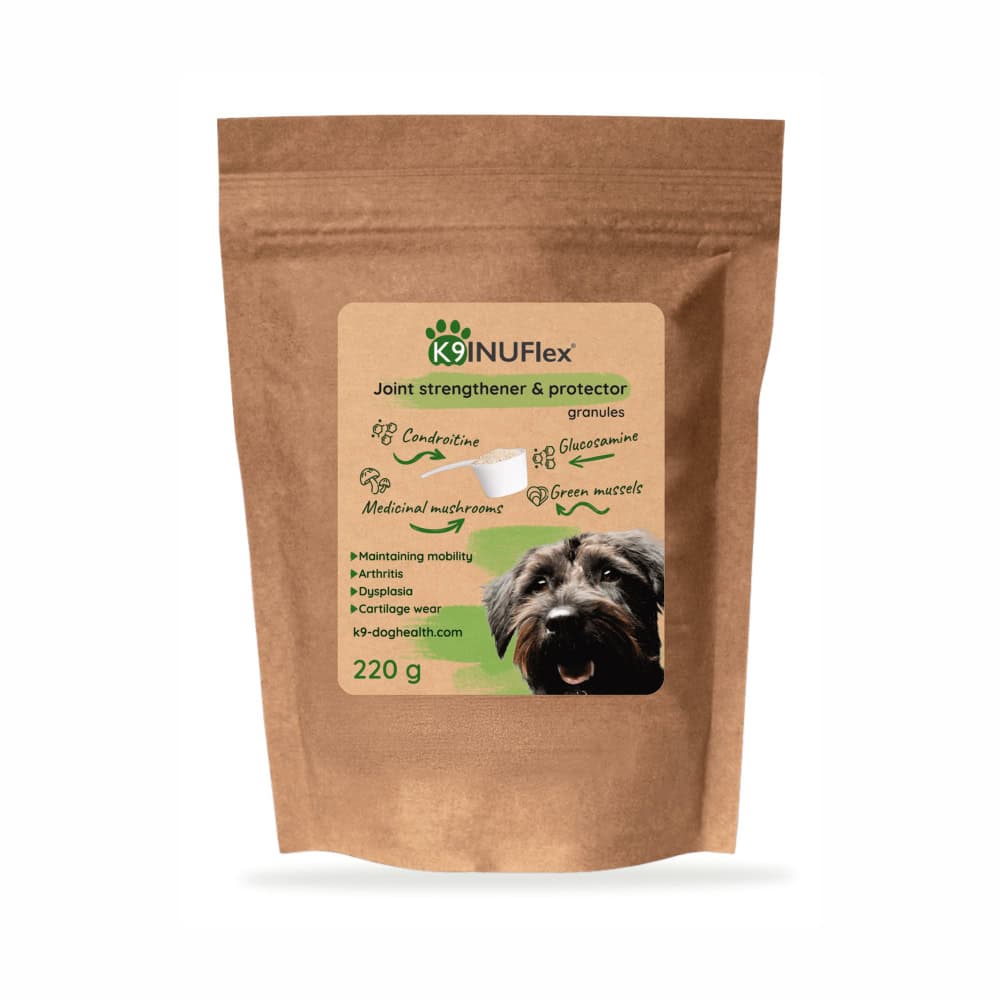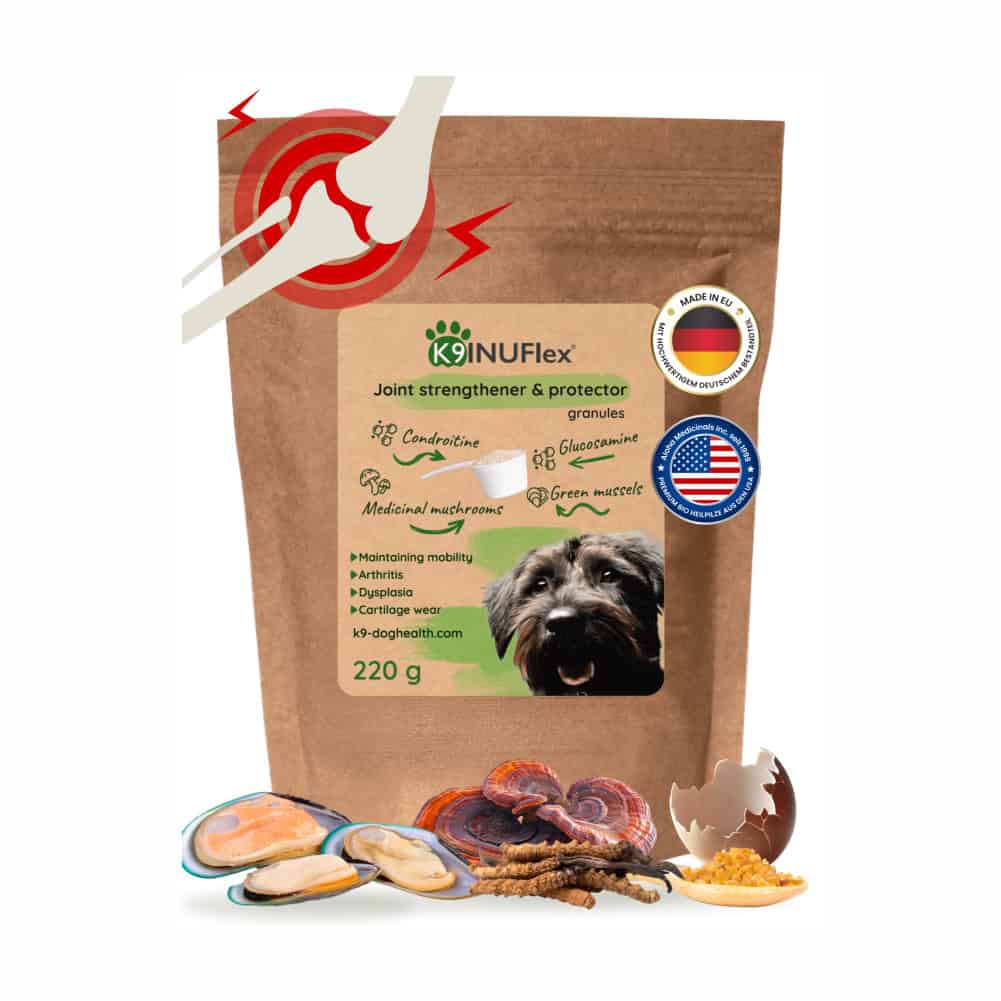As well as being a lot of fun, teaching different dog tricks is also very good for the dog-owner relationship. And there are plenty of compliments to be won while practising at the dog run!
Touching the pointer
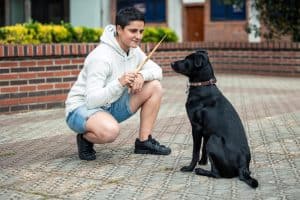
Prepare a pile of reward treats and hold the stick at the level of the dog’s nose. If we’re lucky, it will touch it first – then we ‘catch’ the movement, click and reward. From then on, we reward only the actual touch. If he doesn’t show too much interest, we can try to lead him on: we smear the end of the stick with cheese or cold cuts, so he’ll sniff it – that is, touch it with his nose, then click and reward.
But you can also build up the exercise gradually. At first it’s enough to look at the stick, click immediately and give him a piece of cheese. If you get a little closer on the next try, you get an extra reward and high praise. Over time, he will understand that the reward is somehow related to the stick and will touch it once. Time to hit the jackpot!
Shot dog
This trick imitates the classic shot dog.
The dog is in a sitting position facing us. We put our gun shaping hand on it and say “Boom” or whatever is sympathetic. When we say the command word, we grab the dog’s front two legs and roll him onto his back, hold the motion, then reward.
>When playing “dead” don’t say much, wait until he holds the movement for a few seconds, because if you praise him he will wag, and let’s face it, a wagging “dead” dog is not very authentic.
The dog goes backwards
The dog is basically unaware that it has a “back”.
So teaching him how to move his front and rear body parts separately can be the basis for many more tricks.
This trick will help you do that, but it can also be a spectacular element of dogdancing on its own!
- We prepare a suitable object. First try to get the dog to step on it with one, then two front legs. Using a clicker helps us to time the reinforcement precisely.
- With the reward wall in hand, we try to lead the dog to make one and then more and more movements with his hind legs.
- At first we reward frequently, then we expect more and more, even more turns.
The dog goes backwards (video)
Rotations
The dog can spin around its own axis, even while walking. It can also spin around its owner or a prop – stick, umbrella, etc. – clockwise or counterclockwise. The direction of rotation must, of course, be distinguished by our chosen sound signal.
Teaching circular movements is relatively simple: the dog is led by the “nose” along the desired path. Mostly with a reward bait close to the body, and more with a pointing stick away from the owner. You can also use what you have learned in dog school, e.g. repeatedly doing the “back face” will result in the owner rotating left around his own axis and the dog rotating right around his axis.
You can teach the dog to not only step forward but also reverse around you if it can already back up in a straight line. Position the dog in the middle of a cordon, like a chair, to keep it from straying off the path. Use a new command word to guide the dog around for the lap.
Standing on hind legs
We teach it in the same way as for pitting, but now do not put the dog in front of a wall, as our goal here is to keep its balance without leaning on it. The reward snack or target is raised above his head, prompting him to stand up. The sitting and standing position should be associated with different sound signals. If this exercise is remarkably easy for the dog, he can quickly learn to walk in this pose.
Paw in hand (High-five)
This is a trick that many dogs train themselves to do from puppyhood, especially if the owner is visibly happy to stretch out their paws or smiles at the “potty slap” and turns a blind eye to the bigger or smaller messes.
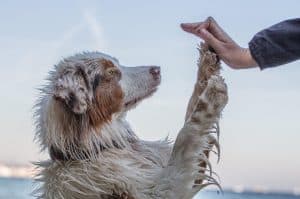
Teaching him is not too difficult. You crouch down in front of the dog, with a visible bite in your left hand, but you can also use a clicker. Place your right palm in front of his left paw and give the command “Paw paw”. At first we reward a one-inch leg raise, but later we make the requirements more demanding: we only reward you if you really put your paw in your hand or if you raise your paw particularly high.
Once he has produced a perfect paw with one leg, we teach him to do the same with the other – in our other palm and, of course, to a different command. (The top list of imaginative distinctive calls for us is the recently heard “Paw-paw”.) The dog will probably offer the more experienced paw first, but for now we ignore this. Sooner or later he will start to stomp and lift his other leg. Immediately click-reward. If he won’t give the other paw on his own, we can help him a little with our hands.
Footsteps
Alternate-leg high-fiving can be developed further. We stand up from a squat and perform the exercise by lifting our legs. As an initial aid, you can place the back of your hand palm up on your knee. The hand signals are gradually abandoned later. A very spectacular trick has come into our possession, which is the ability of dog and owner to lift the leg simultaneously to the beat of the music.
Another trick can be established by clicking-rewarding the dog for raising his leg exceptionally high, and then increasing the time the leg is held up. The end product: dog and master standing side by side holding out their same side legs forward – in a style reminiscent of canoeing.
Paw crossed
A dog lying on the ground with its front legs crossed over each other.
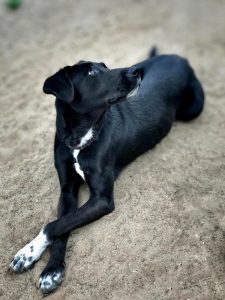
- Only click when the dog touches the object with his right paw.
- Put the object on the ground and click when it touches the object with its paw. Then you can start to attach the command word.
- Change the object to smaller and smaller.
- Finally, take the object away. If the dog doesn’t seem to know the task yet, take a step back.
Bow
The figure of eight is a fun and impressive trick to teach your dog. In this exercise, your dog weaves between your legs while you stand with your feet apart. You can teach it by using a treat to guide your dog through the movements. However, this often means bending down low, especially if your dog is small. To avoid that, it’s better to use a target stick instead.
Start by standing in front of your dog in a relaxed position. Hold the target stick in front of your dog’s nose so they can touch it. Then guide the stick between your legs and around your right leg in a loop. Bring the dog back to the starting point, and reward with a click and a treat. Next, guide them around your left leg using the same technique.
At first, click and reward after each successful loop around a leg. Later on, wait for a full figure eight before giving the reward. Once your dog is confident, you can introduce a command word. You can also help by shifting your weight to the leg they should circle. This gives your dog a clear body cue, along with the verbal signal.
Dog tricks – Eight
The figure of eight is a fun and impressive trick on its own.
In this exercise, the dog weaves between your legs as you stand with your feet shoulder-width apart. The easiest way to teach it is by using a treat in your hand to guide your dog. But if your dog is small, bending over can get uncomfortable—so using a target stick can really help.
Start by facing your dog. Hold out the stick and guide your dog to touch it with their nose. Move the stick between your legs and around your right leg, back to the starting point. Reward your dog with a click and a treat once they complete the loop. Then repeat the same around your left leg.
At first, reward each successful loop with a click and a treat. Later, ask for a full figure eight—or even multiple loops—before rewarding. Once your dog starts confidently moving around your legs, you can introduce a verbal cue. You can also help by shifting your weight slightly toward the leg your dog should circle around, giving a clear body signal along with the cue.
Sideways, sideways movement
Of all the possible ways for a dog to move, at least as far as walking on all fours is concerned, the lateral movement takes the most time to learn. This is the most difficult to do really well.
Learning the “right alignment” exercise in dog school has both benefits and drawbacks. It’s similar to what we now expect from the dog, but it prevents the dog from sitting down, even if it wants to.
In the starting position, the dog stands with the left leg in the “heel” position. Use the right hand to make the front of the body move (using a reward wall, ball, pointer) and the left hand to help the back towards you (you can also use the support stick described above, applying slight pressure). It is very important that the whole body of the dog starts to move to the right at the same time when the command is given. At first, just one or two lunges and you are rewarded. Do not rush, because speed is at the expense of quality: you can only increase the level of demand by taking small steps, more patiently than any other movement you have learned so far.
Facing the dog
Once your dog can confidently move sideways for several metres, start gradually turning to face them. Most dogs tend to back away when they’re directly in front of you, so to prevent any confusion, use a barrier like a wall or fence during the first few attempts.
If you want to teach lateral movement to the left, you have two options. One approach is to mirror everything you’ve done so far—starting from a right “heel” position and moving to the left. The other option keeps the left “heel” as the starting point, but instead of pulling your dog toward you, gently push them in the opposite direction. Just make sure to use a different cue, since you’re now asking for movement the other way.
Start by standing in front of your favourite wall or fence. Keep your left foot forward and cross your right foot behind it. As you give the command, gently press your dog’s shoulder and tail area—around the knee and calf—at the same time.
The moment your dog shifts even a few centimetres to the side, mark the movement with a click, reward them, and celebrate! As your dog learns to move sideways on cue without your help, begin turning to face them. You can even try standing behind your dog, hands behind your back, and use a tempting treat—just tilt your head slightly to the side and blink to keep their attention. Avoid direct eye contact later on, as it can interrupt the flow and spoil their elegant posture.
Shame on you!
The idea of the exercise is that the lying dog tries to cover its eyes and nose with its front paws.
The easiest way to teach this trick is to put a hair band or a piece of tape on the lying dog’s cheekbone. When the dog tries to remove it, he rubs it with his paws and covers his nose. At this point, the dog is told “Shame on you!” and rewarded. Using a clicker, we can refine the trick further, for example, by teaching the dog to put his chin on the ground during the exercise, or to keep his paws on his nose, etc.
Dog Tricks – Slalom
Position the dog on your left side and step forward with your right foot. With the stick in your right hand, put it between your legs and guide your dog over to the right side – if it makes it over, it deserves a click and a reward. Then step forward with the left hand (the stick has been transferred to the left hand) and lead him over to the other side. As with the figure of eight, this exercise is worth rewarding each step initially, followed by a back and forth phase, but of course there comes a time when you can move steadily in a slalom.
For a flawless and elegant slalom, there are two things to watch out for. The first is to step slightly cross-legged in front of the other foot, as opposed to the normal street gait – this makes it easier for the dog. The other is to keep your centre of gravity at the back as much as possible while walking – this will keep your posture straight and avoid a bear-like, stumbling stride.
Of course, you can teach the slalom not only in the “traditional” forward gait: the owner can step sideways across, backwards and the dog can come facing him or also pushing or even crawling between the legs. The principle of teaching is the same in all cases.
Whatever sport or lifestyle program you do with your dog, it’s a good idea to use supplements to help alleviate the increased physical strain.
Check out our Hip & Joint support products. You can also read aboutguard dogs, foxtails, dog fleas, living with a dog, orwhy immune support matters for your pup.
